The starting point for this build was a left over glass dome and a brass base from previous projects. The brass base is from an electric candle light, which, when inverted, fitted the diameter of the glass dome’s aperture perfectly. This sits upon a small circular three-legged candle stand, which in turn is fitted on top of a brass conical section of an old brass chandelier. Inside the candle light base, I fitted an inverted wax-catcher from another candle stick which, into which the brass bulb holder was fitted. Two large brass clock chime gears had their centres removed and were stacked between the bulb holders’ securing rings. When the lamp is lit, they cast a wonderful shadow pattern.
A wooden base was drawn out to accommodate all the parts and cut to shape and routed before being sanded and waxed to a soft sheen.
The secondary light assembly (which is on a separate low voltage battery powered circuit) is made using the clear acrylic stem of the candle light. The base of which is soldered onto a separate old brass candle shade support which is snugly fitted into a 2.5cm hole in the wooden base. The top section of the assembly utilises two securing nuts, and a lens bracket from an old pair of brass binoculars. The small assembly it supports is made from 5 brass components soldered together into a small sub-assembly. A short length of ‘Techniflex’ brass gas hose is then connected to a flanged Meccano contrate gear wheel.
The secondary light assembly (which is on a separate low voltage battery powered circuit) is made using the clear acrylic stem of the candle light. The base of which is soldered onto a separate old brass candle shade support which is snugly fitted into a 2.5cm hole in the wooden base. The top section of the assembly utilises two securing nuts, and a lens bracket from an old pair of brass binoculars. The small assembly it supports is made from 5 brass components soldered together into a small sub-assembly. A short length of ‘Techniflex’ brass gas hose is then connected to a flanged Meccano contrate gear wheel.
The internal lighting is provided by a laser-bright white LED powered by a concealed battery pack fitted into a routed recess in the underside of the wooden base. I wasn’t entirely happy with the first toggle switch I originally installed, (see below) so I scratch-built a bone-handled brass knife switch (made in exactly the same way as a normal riveted knife grip) and mounted it on top of the wooden base and routed the wiring using brass pipe nipples both on the switch base and the base of the light tube ‘tower’

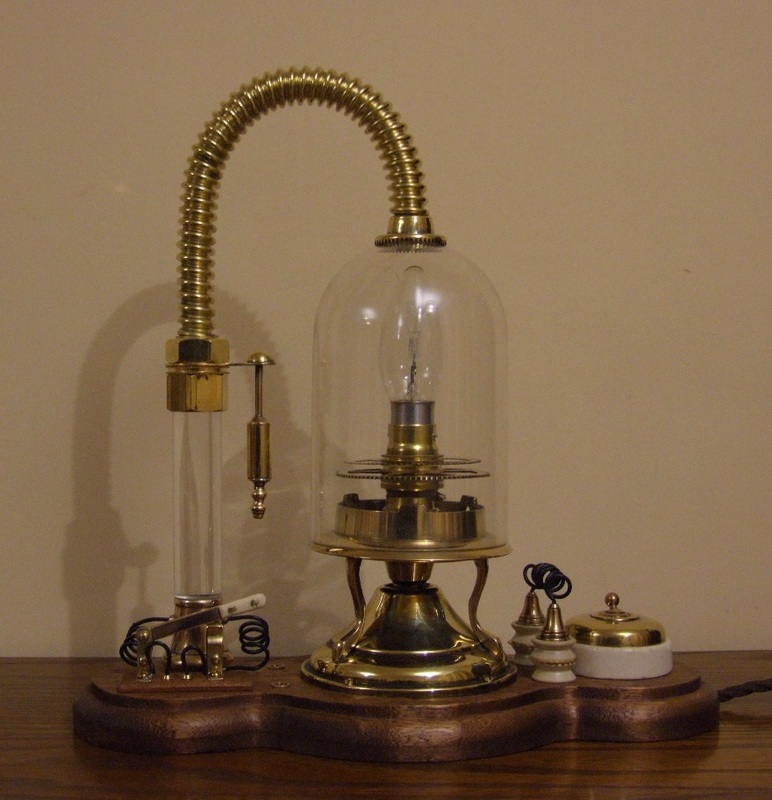
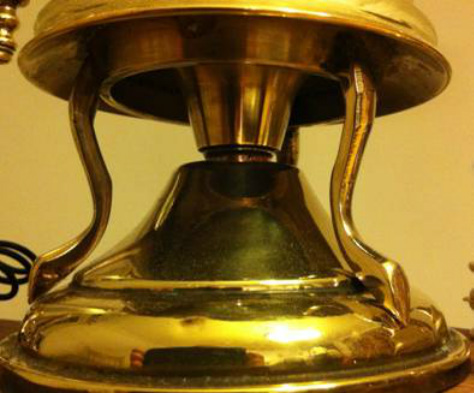
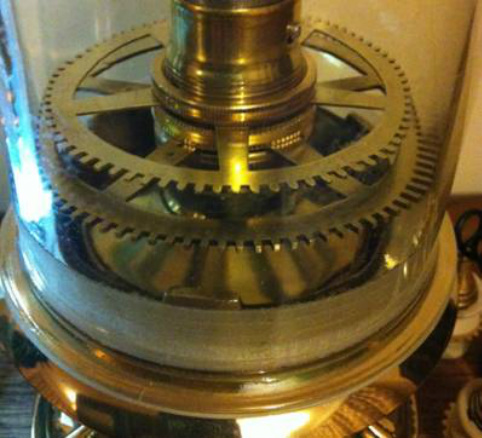
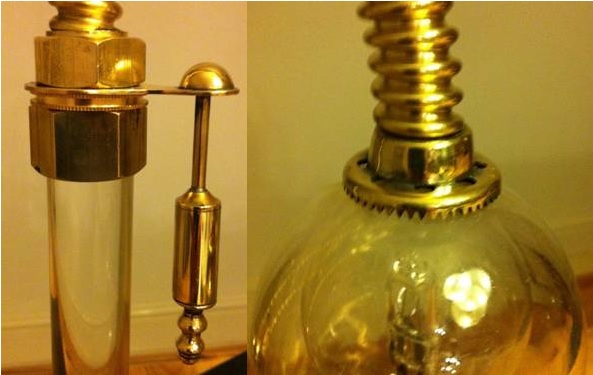
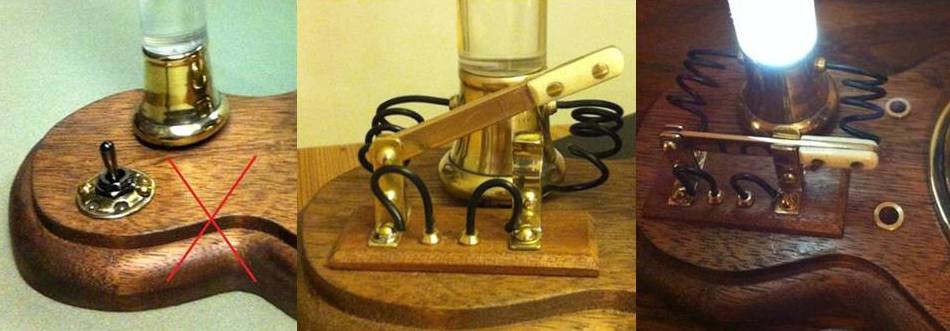
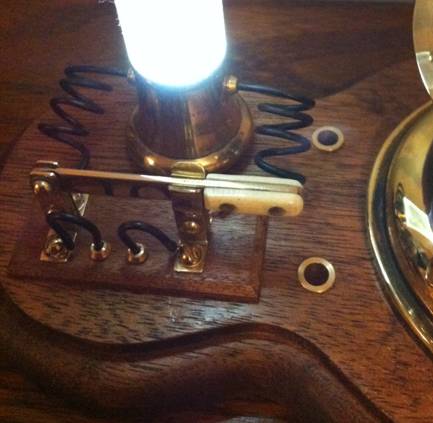
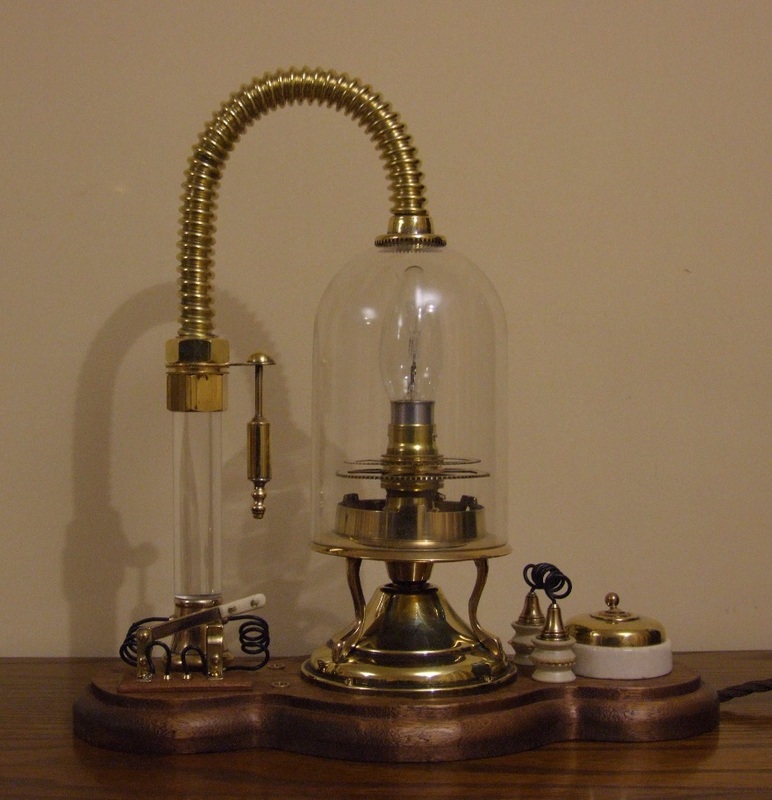
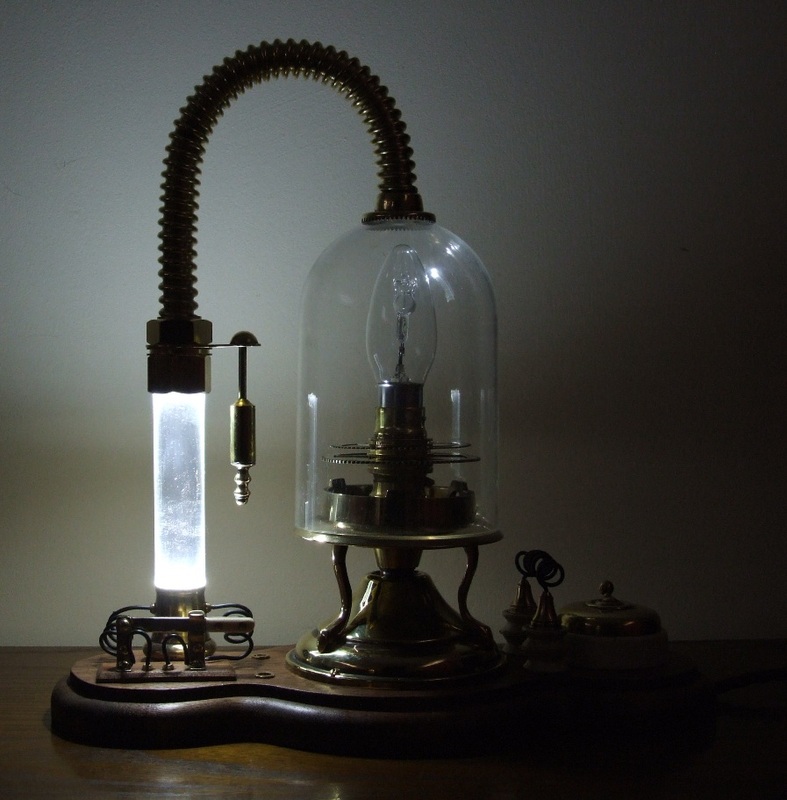
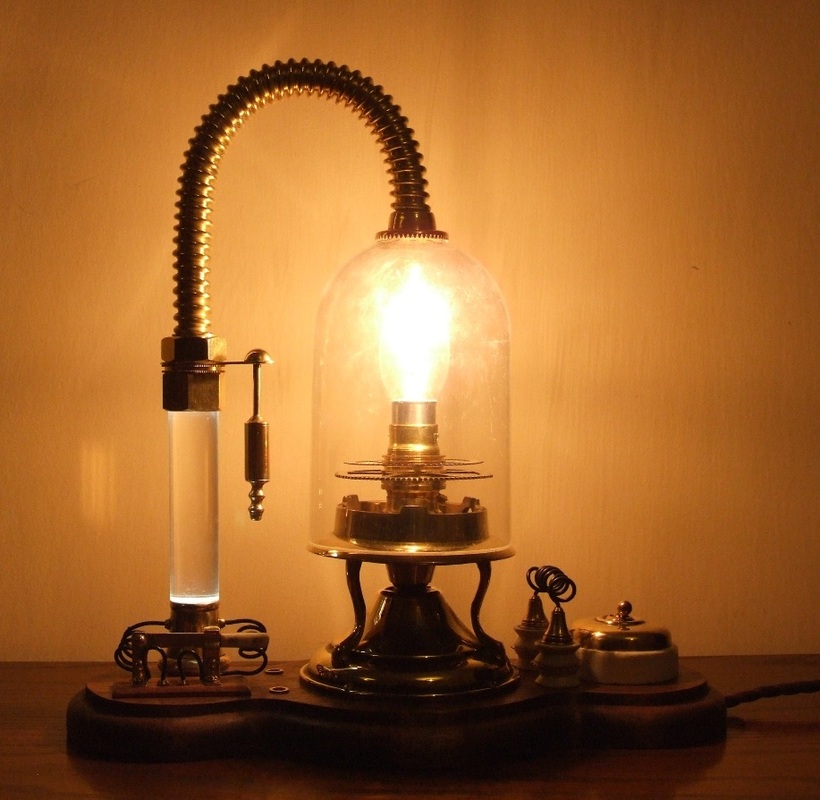
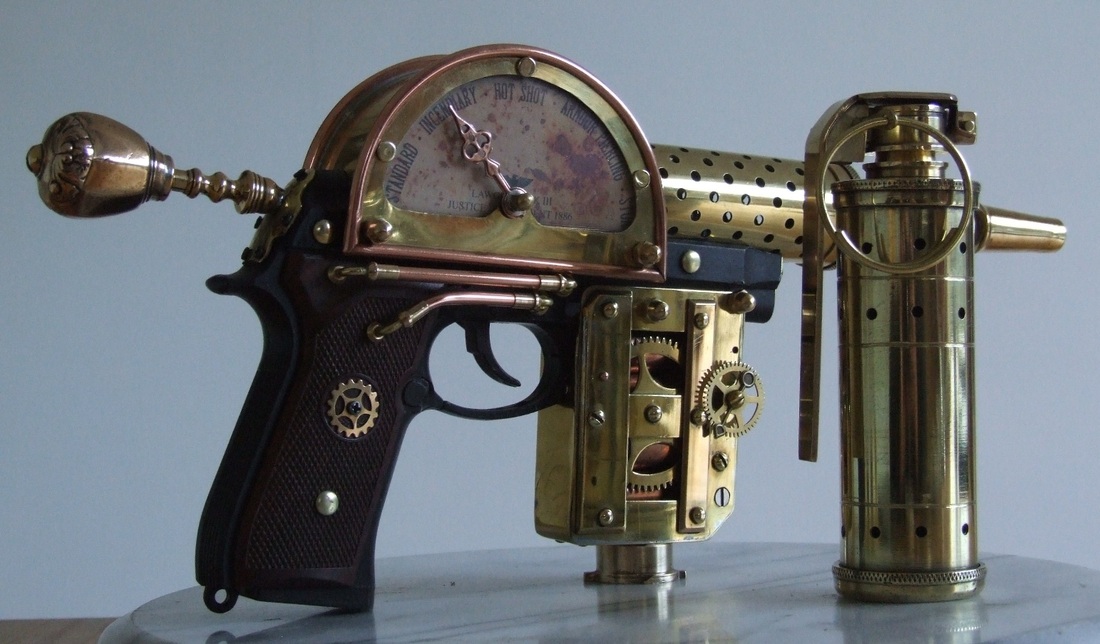
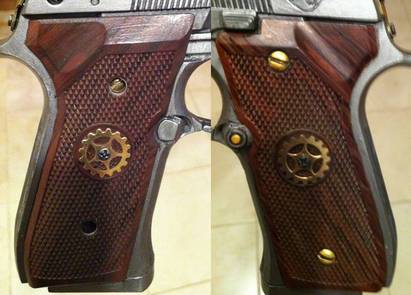
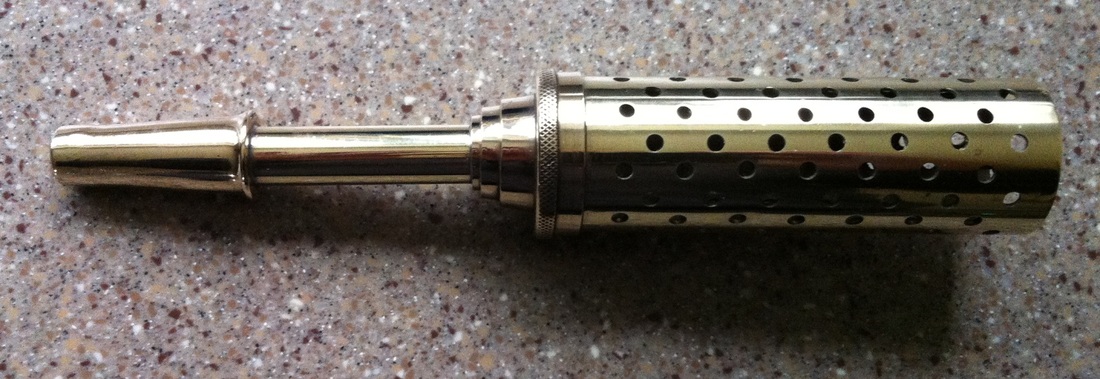
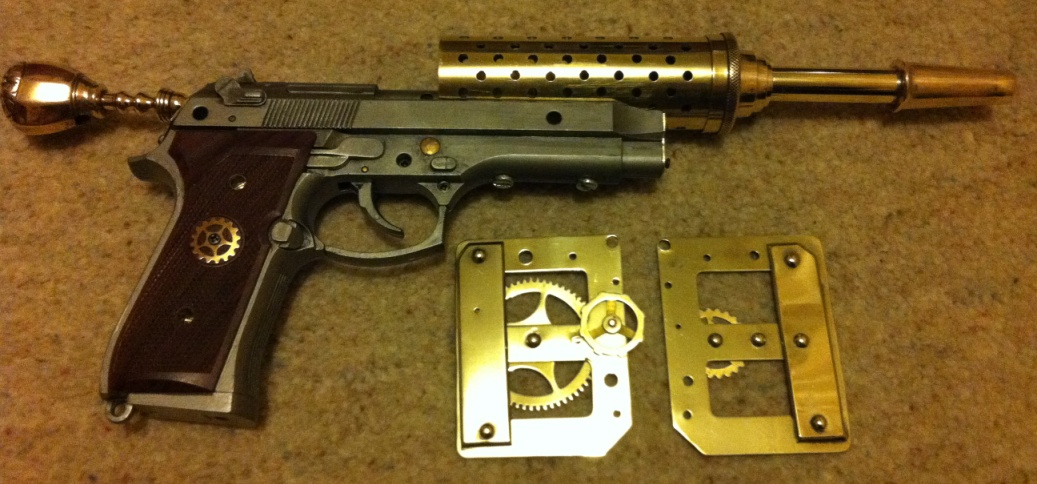
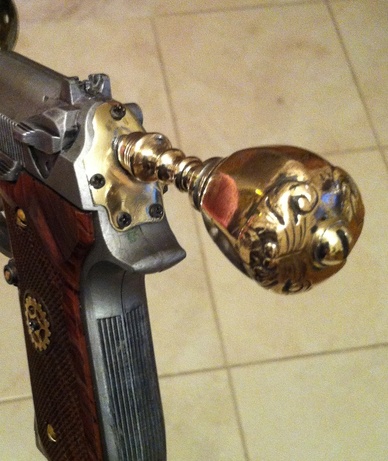
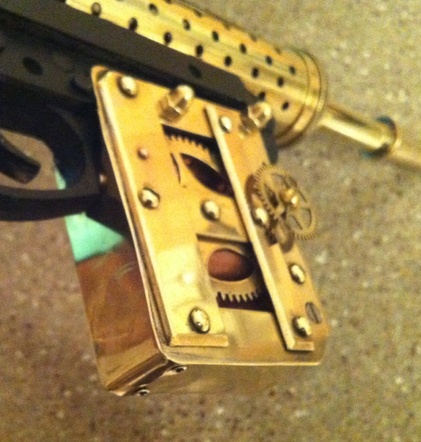

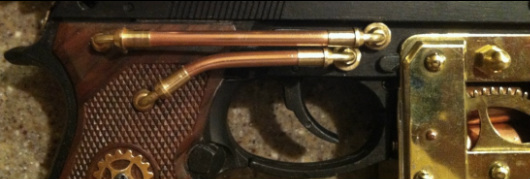
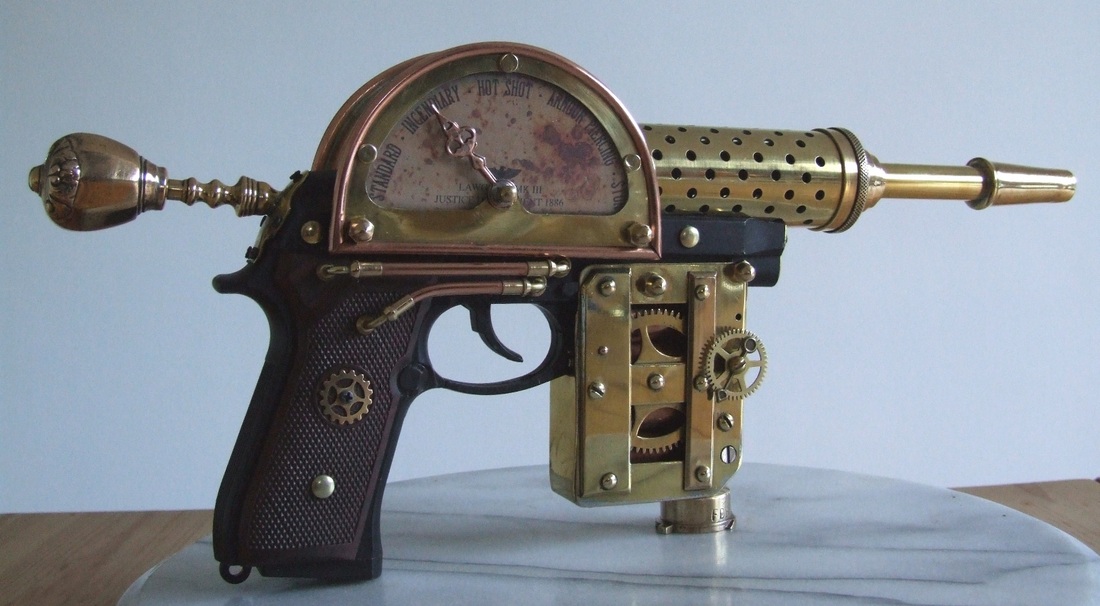
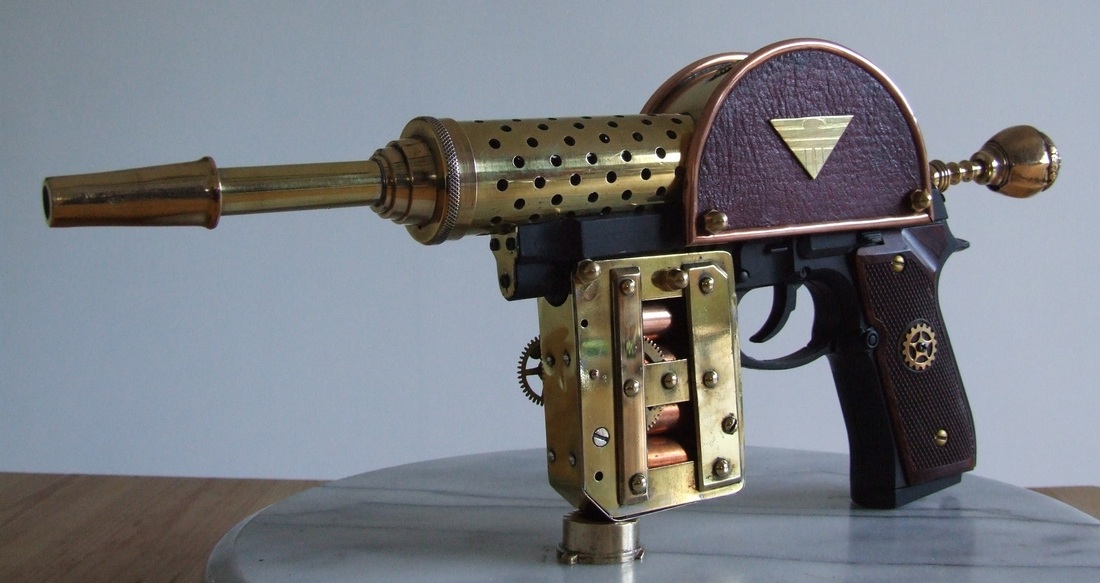
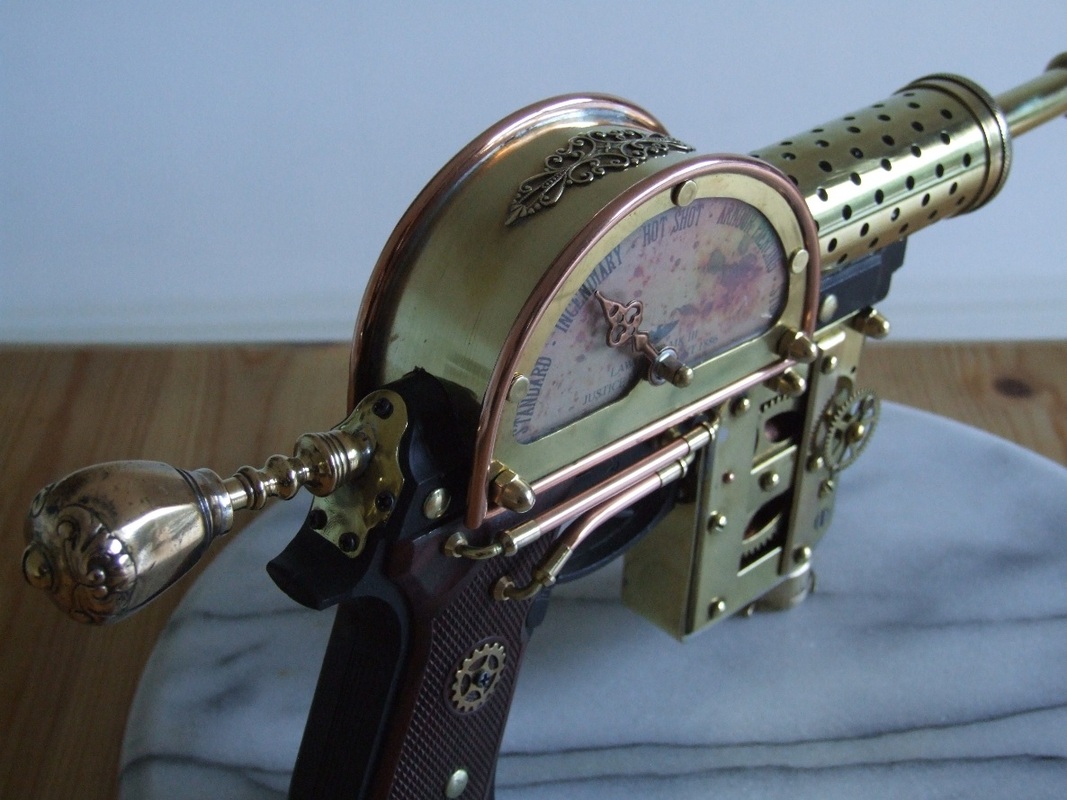
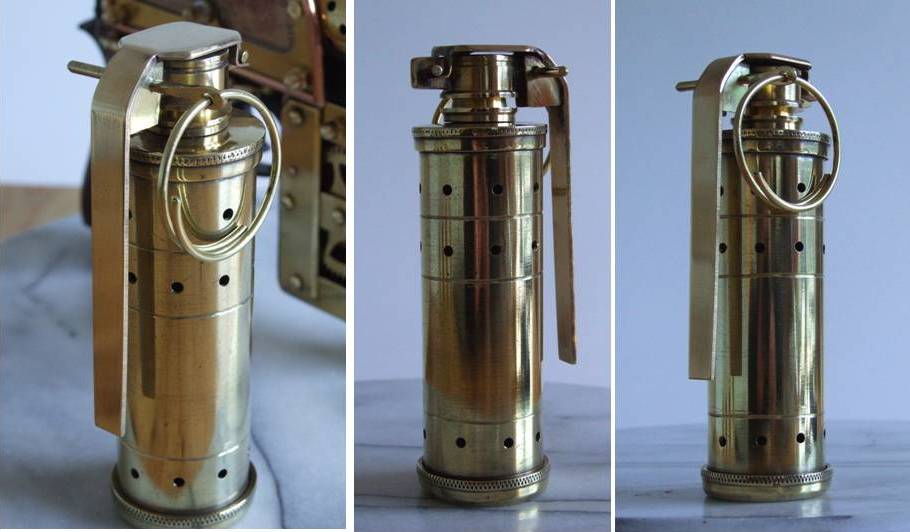
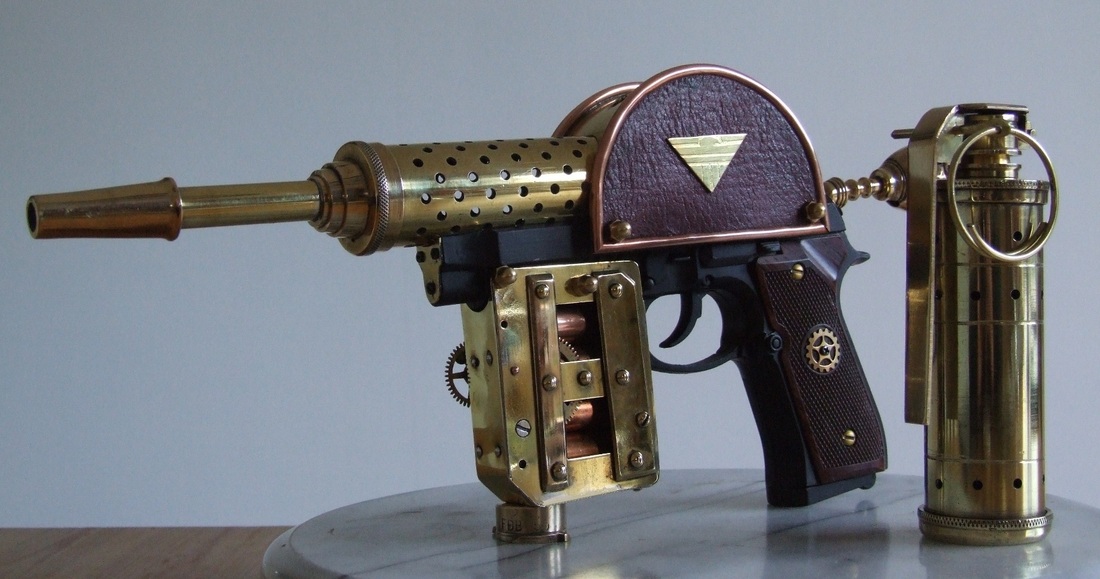
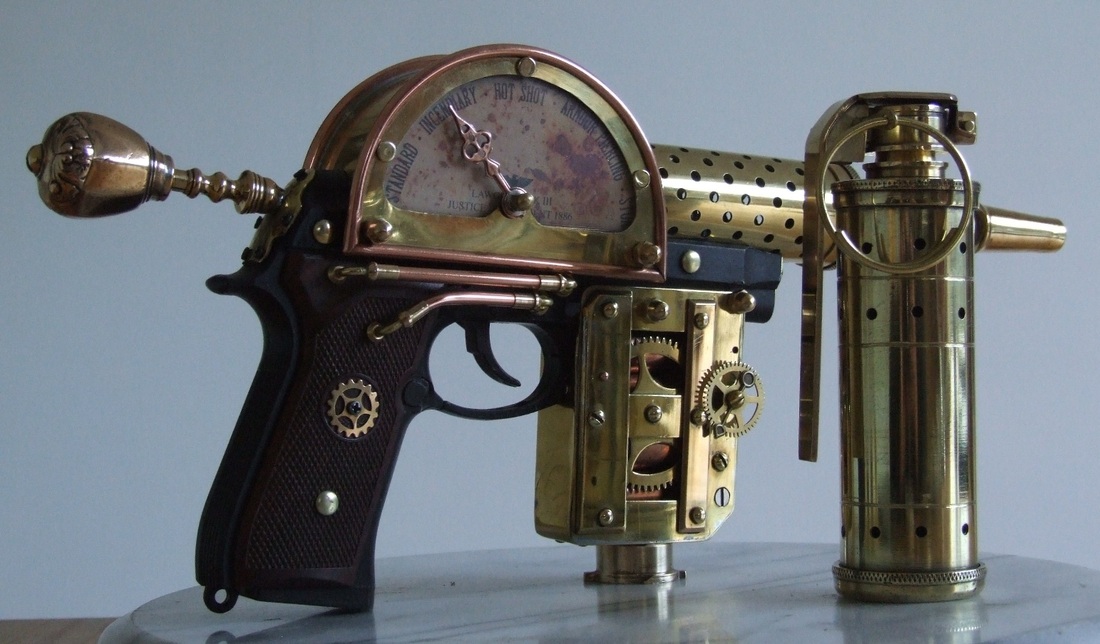
 RSS Feed
RSS Feed
